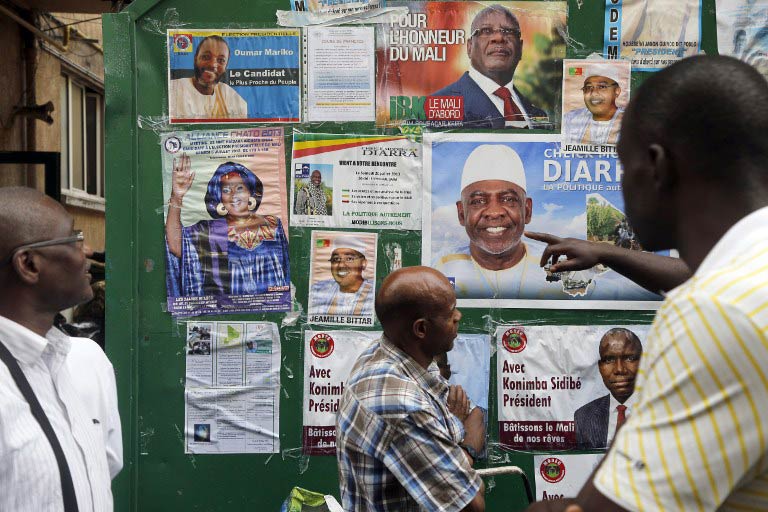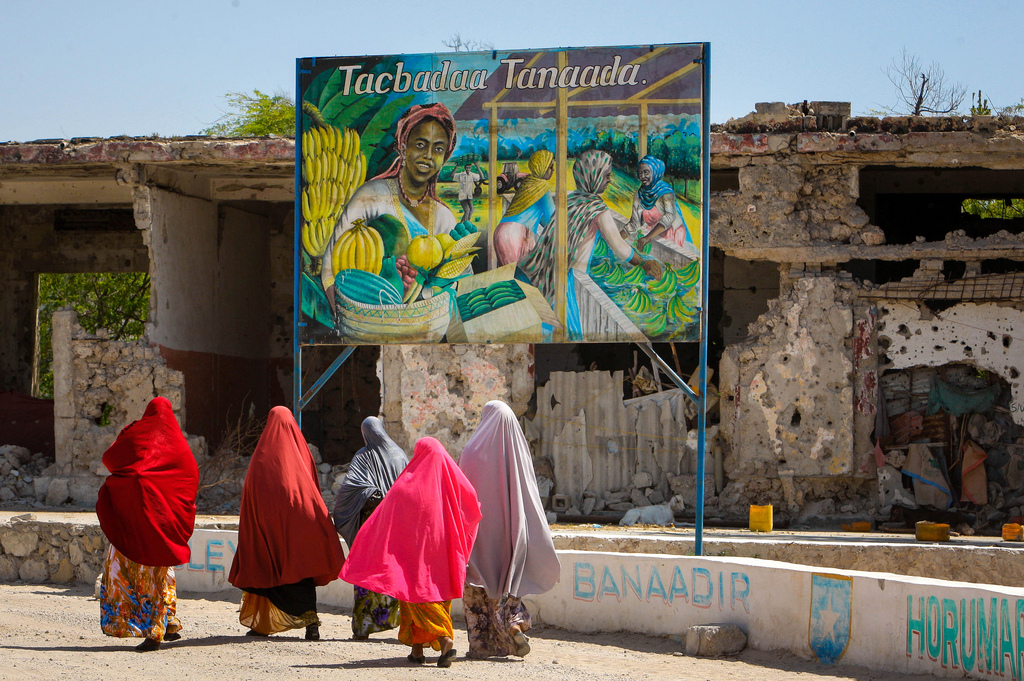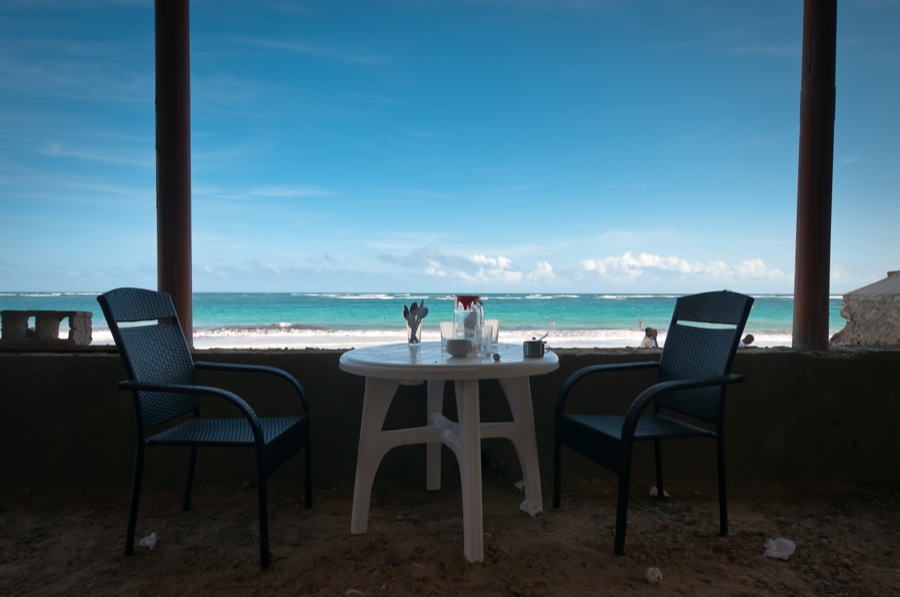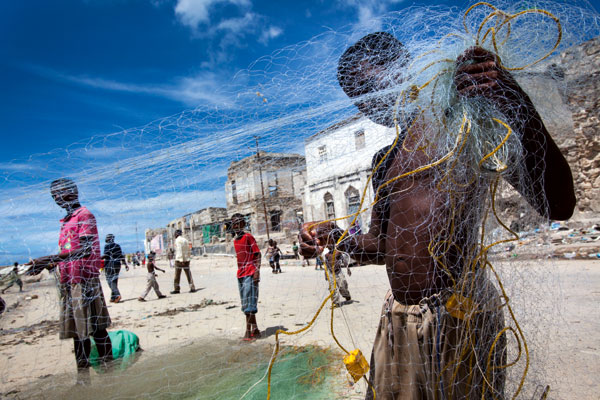Hidden footage obtained by the Mail & Guardian has revealed that the voters’ registration process ahead of Zimbabwe’s election has not been as free and fair as people hoped.
Support grows for the only woman in Mali’s presidential race
A black Mercedes pulls up in a grimy street in Bamako and the back door swings open. A satin-shoed foot emerges beneath a crisp brocade gown and steps gingerly on to the litter-strewn asphalt.
Haidara Aissata Cissé, the only woman standing for president in Mali’s upcoming elections, is greeted by deafening chants of “Chato! Chato!”, her nickname.
Cissé is clearly popular among the market traders in Niarela, the old business district of Bamako where sleek office buildings, hotels and embassies stand incongruously among ragtag, low-rise stalls.
She is the only candidate to visit the area – or indeed to include walkabouts in their campaign schedule at all. Most political hopefuls have concentrated on rallies in stadiums, and visiting local dignitaries and elders.
Cissé tiptoes around the fresh produce laid out on the ground in the market stalls.
“They are so excited,” she says. “They have never seen a politician come to them before.”
It has been six months since France began a military intervention in its former colony to oust Islamist militants who had imposed sharia law in northern cities such as Timbuktu and Gao.
The capital, Bamako, was never occupied but its already weak economy has been crippled by the events of the past 18 months, including a military coup. The upcoming election on Sunday July 28 has been imposed on Mali by the international community despite widespread fears that the country is not ready.

Cissé, a 54-year-old MP and former travel agent, is an outsider among 27 candidates for the presidency. But determined campaigning – and plenty of walkabouts – have improved her following and helped win her the backing of all of Mali’s women’s groups.
If there is no outright winner on Sunday and the presidential election goes to a second round on 11 August, Cissé could drive a hard bargain between run-off candidates vying for the female vote.
Despite the odds, she says she will be the next occupant of Koulouba, the head of state’s palace on a rock overlooking Bamako. She even believes she can get there without giving away the tea, sugar, T-shirts or cash that are common currency in Malian elections.
“One of the market women said ‘give me a wrap with your face on it and I’ll wear it’,” she said. “So I explained to her that there are 703 local authorities in Mali and if I give away fabric to all the women in every commune, it will cost me a billion CFA francs [£1.5m] which might be better spent on a project to help the poor. She liked that and said she would vote for me.”
In common with the other candidates, Cissé does not provide a printed manifesto. She claims it would be copied by her rivals. But she tells a rally at Koulikoro, north of Bamako: “If I am elected, I will launch a Marshall plan to create 500,000 jobs. I shall introduce a programme of excellence to reform education and training. I shall create grants of 100,000 CFA francs [£128] for the poorest mothers so that they can put their children, especially girls, in school.”
In a country where welfare and education have, in living memory, been the responsibility of western aid agencies and Islamic solidarity, development issues are not vote-winners. Unicef, the United Nations children’s fund, has drawn up a primer for candidates listing some of Mali’s shocking statistics: 90% of women have undergone female genital mutilation; one million children are out of school; 2.2 million people defecate in the open air.
Righting those wrongs seems less of a priority for ordinary Malians than building a strong army after the country had to depend on France – and now a United Nations force, Minusma – to secure its borders.
For that reason, Cissé’s campaign calls for “a united and strong Mali”. It is the slogan of almost all of the candidates.
Oumou Touré, president of Cafo, an umbrella organisation for Mali’s women’s groups, said that to do well Cissé must fight a gender-blind campaign. “Mali’s crisis is the result of poor governance which, in turn, is the result of a dysfunctional society. Chato must be seen as the candidate standing for equity, balance and the happiness of all men and women.”
Despite looking slightly out of place in her Senegalese gown and pointy shoes, Cissé seems to impress.
Mariam Coulibaly, a trader, says: “She asked us about our lives. We said we need a market building because selling vegetables on the ground is not hygienic. It is the first time I have seen someone like her come into the market. Usually the only place you see politicians is on posters.”
Alex Smith for the Guardian
Kenya: All a-Twitter about everything
A few weeks ago, I walked into a friend’s house to find a raucous argument going on. I didn’t know what the exact topic of the argument was, but the bottles of wine and beer on the table indicated that it had veered off course a long time before. The argument reached an impasse and could only be resolved in one way: Google. As the only sober one in the room, the task befell me. I asked for a phone. Tap. Tap. Tap. We had the answer. The argument was over. All was well in the world. The gods of the internet had spoken through the high priest of the smartphone.
The internet-enabled phone has changed many Kenyans’ relationship with the internet. According to the Communication Commission of Kenya, 99% of the country’s 16 million internet connections are on mobile devices. Advertising campaigns by the mobile network operators coupled with low-cost smartphones such as the Intel Yolo and the Huawei Ideos and declining costs of data have seen mobile data consumption grow at 75% year on year.
Increased access to the internet has had some very interesting results and opened some doors into the Kenyan psyche, thanks especially to Twitter.

Kenya is Africa’s second most active country on Twitter. The microblogging service has provided the perfect tool for Kenyan youth wanting to be heard and seeking validation. It offers the option for anonymity and has a numeric metric for validation in the form of number of followers. We will often put out an update, then keep checking out mentions, waiting to see how many retweets and favourites we have garnered. Just like in any society, there are people at the top of the ladder. On Twitter, they’re the bigwigs with over 10 000 followers (as of the last informal definition). These users are regarded as trendsetters and opinion influencers.
Kenyans on Twitter – #KOT as they are known – are quick to weigh in on everything and anything. They’ve even achieved global recognition on several occasions. It started with #Makmende, a campaign that resulted in Kenya’s first viral music video and the country’s own Chuck Norris.
Shortly after that, there was #RutoPlaylist which Kenyans used to suggest songs for deputy president William Ruto to listen to on his iPod during his trip to the Hague for his ICC trial. In March this year, they used the #SomeoneTellCNN hashtag to mock the television network’s election reporting. Most recently, Kenyans went to war with Nigerians, using #SomeoneTellNigeria to vent about how the Kenyan football team was being treated in Nigeria. So mighty are #KOT that at the peak of Nigeria-Kenya tiff, Kenya was producing tweets at 6 times the rate Nigerians were even though Nigeria’s internet population is over four times greater.
Kenyans on Twitter have also done some inspiring things. In November 2012 when Nairobi’s public transport providers went on strike, #KOT started #CarPoolKE, an initiative which saw car owners give rides to stranded commuters for free. Another initiative that has enjoyed success on Twitter is Wanadamu (meaning “We have blood”). This service puts out calls for blood donations to supplement Kenya’s overstretched blood banks in cases of accidents, surgeries and blood shortages.
On the downside and as can be expected, there’s some not-so-pleasant activity. Cyber bulling and trolling is on the rise and #KOT often latch on to on a trending topic, throwing acerbic jabs to seek validation from the bigwigs through LOLs, retweets and faves. As funny as their insults may be, they actually cause significant damage to the recipient. In some cases, the “victims” commit twittercide (delete their Twitter accounts for good).
Kenyans’ use of the internet is not just limited to Twitter, though. One dark, rainy evening I caught a taxi driven by a 60-year-old fellow who knew very little English. When I gave him my destination, I expected to see him furrow his brow and ask me to direct him. Instead he picked up his phone and started tapping away.
“Nini hiyo?” (What is that?)
“Ngoongoo Maps! Hata mimi ni ndingito!” (Google Maps. I am digital too!)
Sure enough, he got me to where I was going without any problems.
Joel Macharia (@themacharia) is the founder of the online consumer finance publication pesatalk.com and the agribusiness start-up Sagana Farms. He is one of 10 young Africans shortlisted to be a One Young World delegate at this year’s summit. At this event, the M&G’s Trevor Ncube will be chairing a session on African media and what Africans think of their journalists. To share your views, complete this short survey.
NoViolet Bulawayo makes Man Booker Prize longlist
Zimbabwean writer NoViolet Bulawayo is the only African on the Booker longlist that includes celebrated authors like Colm Tóibín and Jim Crace. She’s on it for her debut novel We Need New Names, set in a shantytown called Paradise in Zimbabwe.
The longlist for the prize, one of the English language’s top fiction awards, names 13 writers from seven countries.
Selected from 151 titles, it also includes authors from Britain, New Zealand, Canada, Australia, Malaysia and Ireland.
Announcing the list, the judge Robert Macfarlane said: “This is surely the most diverse longlist in Man Booker history: wonderfully various in terms of geography, form, length and subject.”
“These 13 outstanding novels range from the traditional to the experimental, from the first century AD to the present day, from 100 pages to 1 000, and from Shanghai to Hendon.”
If you thought the name NoViolet Bulawayo is an improbable one, it’s probably because hers is a moniker. Born Elizabeth Tshele in 1981 in Tsholotsho, in the south of Zimbabwe, she moved to the United States when she was 18.

A previous winner of the Caine Prize, she is also the recipient of the Truman Capote Fellowship. She won the Caine Prize in 2011 for the story Hitting Budapest, included in her debut novel as the first chapter.
The beautifully written story is told using a deceptively simple but mature child narrator. It begins: “We are on our way to Budapest: Bastard and Chipo and Godknows and Sbho and Stina and me. We are going even though we are not allowed to cross Mzilikazi Road, even though Bastard is supposed to be watching his little sister Fraction, even though mother would kill me dead if she found out; we are going. There are guavas to steal in Budapest, and right now I’d die for guavas, or anything for that matter. My stomach feels like somebody just took a shovel and dug everything out.”
In total, seven women are on the list, the others being Alison MacLeod with Unexploded, Charlotte Mendelson with Almost English, Canadian Ruth Ozeki with A Tale for the Time Being, and New Zealand’s Eleanor Catton with The Luminaries.
The judges will meet again in September to decide a shortlist of six books and the winner will be announced at a ceremony on October 15 in London. – Percy Zvomuya and Reuters.
This article was first published in the Mail & Guardian.
Showcasing a different Somalia
Birthed out of the frustration of the mostly negative and one-dimensional depictions of their country, and armed with the “responsibility of building a better Somalia”, the curators behind the blog Discover Somalia make use of imagery and other sourced information in an attempt to “change the negative perceptions and stereotypes” about their country.
Dynamic Africa spoke to them about this new project aimed at showcasing the diversity of life in Somalia.
Can you tell us a little bit about who the people behind the “Discover Somalia” initiative are?
Discover Somalia was created by a group made up of Somali diasporans, mostly college students in United States and the United Kingdom who are very much up to date on current affairs in Somalia and/or are involved with Somalia in their respective studies. After seeing how Somalia is portrayed in the mainstream media, we wanted to take ownership. We … as free Somalis at this historic moment in our country wanted to help define and shape the country we want. We never got to experience [what] a stable Somalia looks like, but we want to take responsibility of building a better Somalia that can live up to the promise of all its peoples.

What are the main objectives of your blog? What inspired you to create it?
Discover Somalia is an online photography blog that attempts to change the negative perceptions and stereotypes of Somalia. Somalia is not a place of war and famine and destruction and all these horrible things we so often hear in the mainstream media, but it’s a place where normal people do normal things all the time, just like we do. We wanted to start a project that could be more all encompassing, we wanted a collection of images that showcases Somalia’s progress and normalcy. We have many present and future objectives, but for now we want display images progress and history of Somalia, so that people understand that there is [more] to Somalia.

What would most readers gain from your blog?
For decades, mainstream and Somali media have documented and continue to document a seemingly endless cycle of wars and famine in Somalia, exposing otherwise ignored tragedies to the global audience. But too often the subjects of these images seem to be reduced to symbols, and viewers do not encounter them as fully rounded human beings. And we rarely see photos of the Somalia’s progress or the cultural heritage and history of Somalia. A complicated country is often reduced to caricature. So when people come to our blog we want them to instantly see a different Somalia that they don’t witness elsewhere.

Photography seems to play a huge role in your blog’s aesthetic, do you plan on including other forms of artistic/media narratives?
Everyone sees things differently. Put 100 photographers in a room and you’ll get 100 different photos. The way you see the world is unique, and photography lets you share that perspective with others. We saw too many people focusing on images of the deadly explosions in Mogadishu, while turning a blind eye to the entrepreneurs, footballers, beachgoers and the reconstruction of Mogadishu. We believe that even though Somalia is busily rising out of the ashes, to the majority of the world it will remain, for a long while, the land of starving children, AK47-wielding rebels and greedy big-stomach-small-brain politicians. It takes a long time to change a bad image … but we can do it, one photograph at a time.
Visit the blog at http://discoversomalia.tumblr.com/
Dynamic Africa is a multimedia curated blog focused on all facets of African cultures, African history, and the lives and experiences of Africans on the continent and in the diaspora – past and present. Visit the blog and connect with the curator, Funke Makinwa, on Twitter.